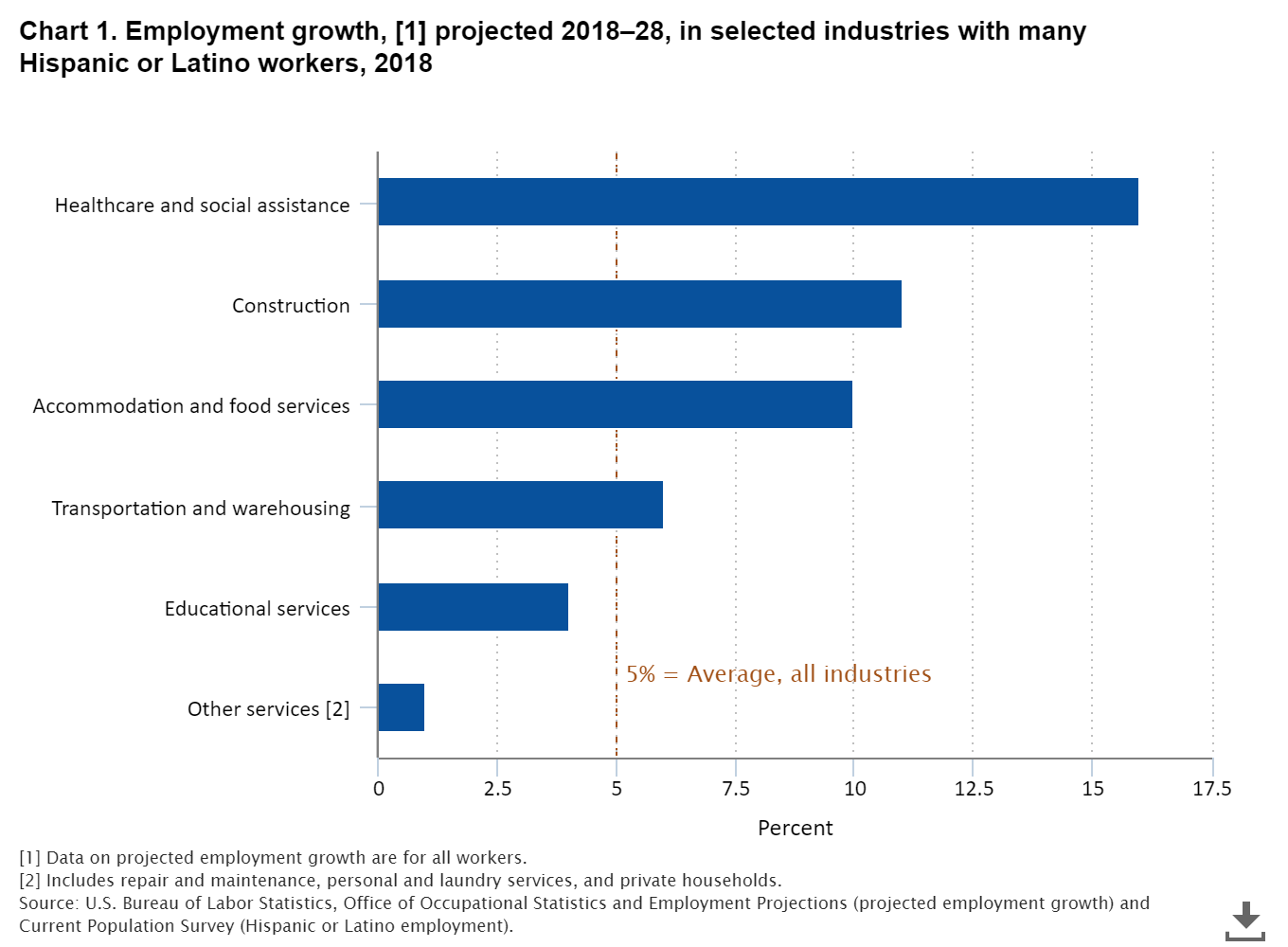We’ve already discussed labor force growth projections and how the Hispanic share of the labor force is expected to increase more than that of any race or ethnic group – growing from 17.5 percent in 2018 to 20.9 percent by 2028.[1] Let’s take a closer look at what this means at the industry level.
The chart below shows the percent growth in employment projected from 2018 to 2028 in select industries with a relatively large number of Hispanic workers, according to the Bureau of Labor Statistics.

Chart from the U.S. Bureau of Labor Statistics. Click here to see more data.
Healthcare and social assistance is the industry projected to have the fastest employment growth for workers of all races and ethnicities, with a growth projection of three times the average for all industries. In 2018, nearly 2.9 millions workers in this industry were Hispanic or Latino.[2] The industry with the most Hispanic workers, 3.4 million to be exact, is the construction industry. For reference, Hispanics that work in construction account for about 13 percent of all Hispanic or Latino workers.[3] This number is only expected to increase in the coming years.
Why is knowing industry projections for U.S. Hispanic labor force growth important for businesses? Because the workforce of tomorrow (and today) looks markedly different than the workforce of previous decades. Economic changes, such as the Baby Boomer generation entering retirement in record numbers and a declining overall labor force participation rate, highlight both the importance and need for Corporate America to tap into the rapidly growing, young U.S. Hispanic population.[4] Understanding where the opportunities for recruiting and developing Hispanic talent are will be crucial to Corporate America’s long-term growth and success. Businesses can tap into the Hispanic demographic by
- Working with universities and colleges to recruit Hispanic entry-level talent
- Ensuring that there is a diverse slate of candidates for open positions
- Cultivate Hispanic talent by ensuring Hispanics in the organization are well represented in sponsorship and mentorship programs
As the demographics of the U.S. workforce continue to evolve, businesses must leverage their most important resource effectively, their people. Understanding what their talent pool will look like in the upcoming years will allow businesses to tap into these resources more effectively in the long run.
Our next blog post will focus on how Hispanics are being disproportionately impacted by the economic effects of COVID-19. Stay tuned!

